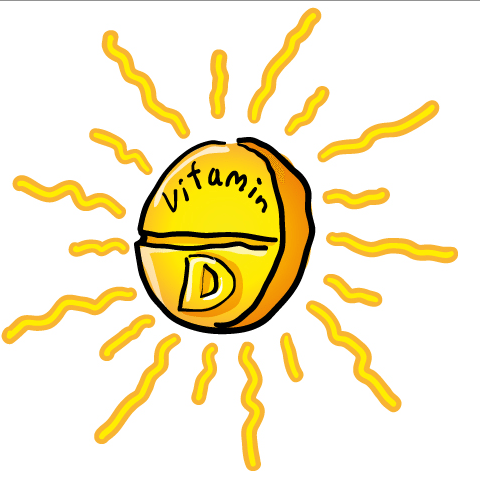Getting Enough Vitamin D
 According to the Dietary Guidelines for Americans, vitamin D is a nutrient of concern. This means that most people don't get nearly enough of it. Earlier this week, we explored the importance of vitamin D in osteoporosis prevention, as well as cancer prevention and health improvement. Many different products contain vitamin D, but not all of them are good for you. In this article, we'll explore some healthful -- and not-so-healthful -- sources of this vital vitamin. Which will you pick?
According to the Dietary Guidelines for Americans, vitamin D is a nutrient of concern. This means that most people don't get nearly enough of it. Earlier this week, we explored the importance of vitamin D in osteoporosis prevention, as well as cancer prevention and health improvement. Many different products contain vitamin D, but not all of them are good for you. In this article, we'll explore some healthful -- and not-so-healthful -- sources of this vital vitamin. Which will you pick?
Healthful Sources of Vitamin D
- Sunshine is the best way to get enough vitamin D-3.
- For people in a subtropical region, as little as 5-10 minutes of direct sun on the arms or legs several times a week would enable the body to get the recommended adequate amount of vitamin D.
- In the winter and fall of cooler regions (like Seattle or Boston), the sun's UV rays are too weak to make vitamin D. This means that a dietary source is needed.
- Two servings of nonfat skim milk or fortified soymilk (or some new yogurts) plus a 3.5 oz serving of fatty fish (herring, salmon, sardines) twice a week would probably be adequate to meet your vitamin D needs during this time.
- The human liver stores vitamin D-3 so if you get plenty of sun in the summer, this can help meet the body’s needs in the late fall and winter months.
- Avoid getting a sunburn -- you need only a modest amount of sun. That's enough to maintain a light tan. People who tan darker have less risk of skin cancer but require more sunlight to make enough vitamin D than someone who has light skin and tans poorly.
Less Healthful Sources of Vitamin D
- There is growing concern that synthetic vitamin D-2, found in milk and other fortified foods, may have less vitamin D activity and may also be more toxic than natural vitamin D-3. Synthetic vitamin D-2 is an acceptable source if sunlight is not possible, but it is not preferred .
- Liver is a good source of vitamin D-3 but is very high in retinol and cholesterol. It also has a fair amount of saturated fat.
- Cod liver oil, which is a rich source of vitamin D-3, is high in cholesterol and retinol. Excess retinol and increased LDL cholesterol appear to promote osteoporosis. That makes cod liver oil a far from ideal source of vitamin D-3.
By Dr. James J. Kenney PhD, RD, FACNBrought to you by the Nutrition Education Store. We've got lots of educational items in the store these days! Why not take a moment to look through our presentations, posters, handouts, games, etc?